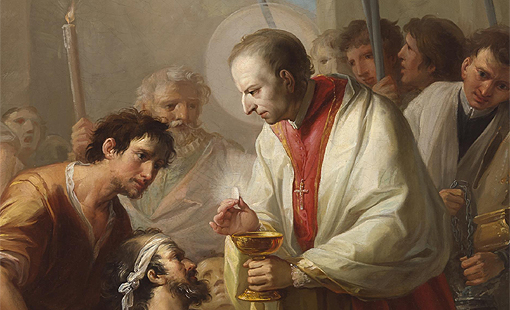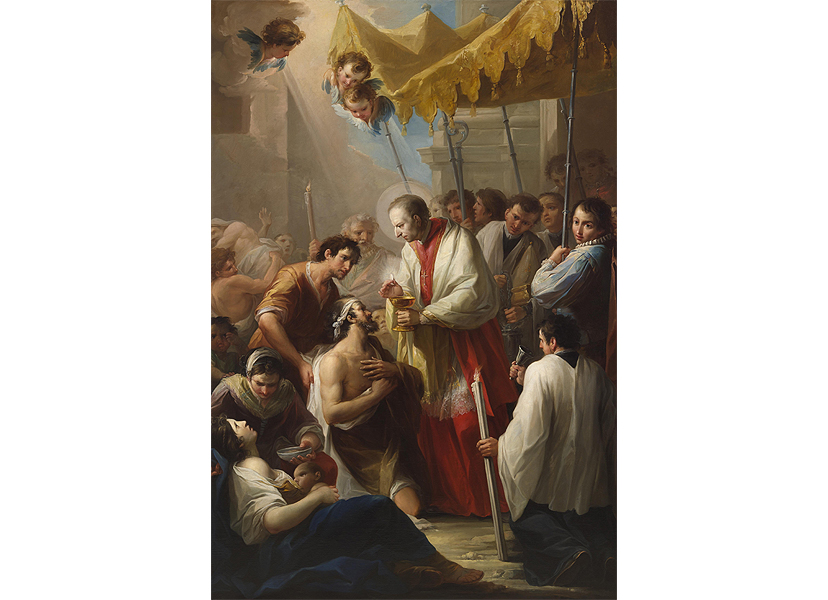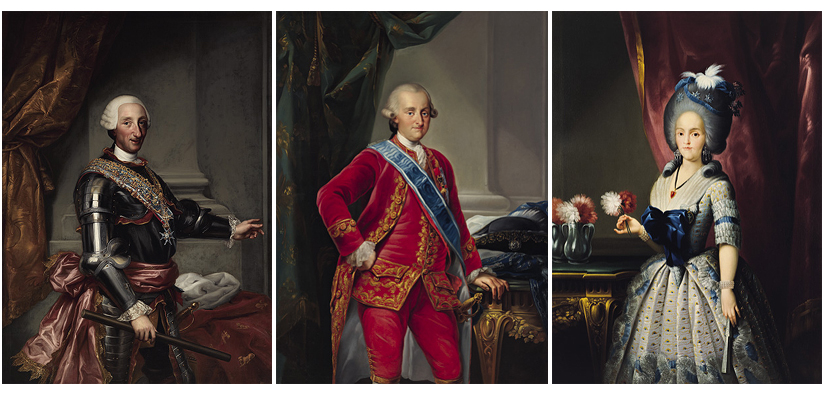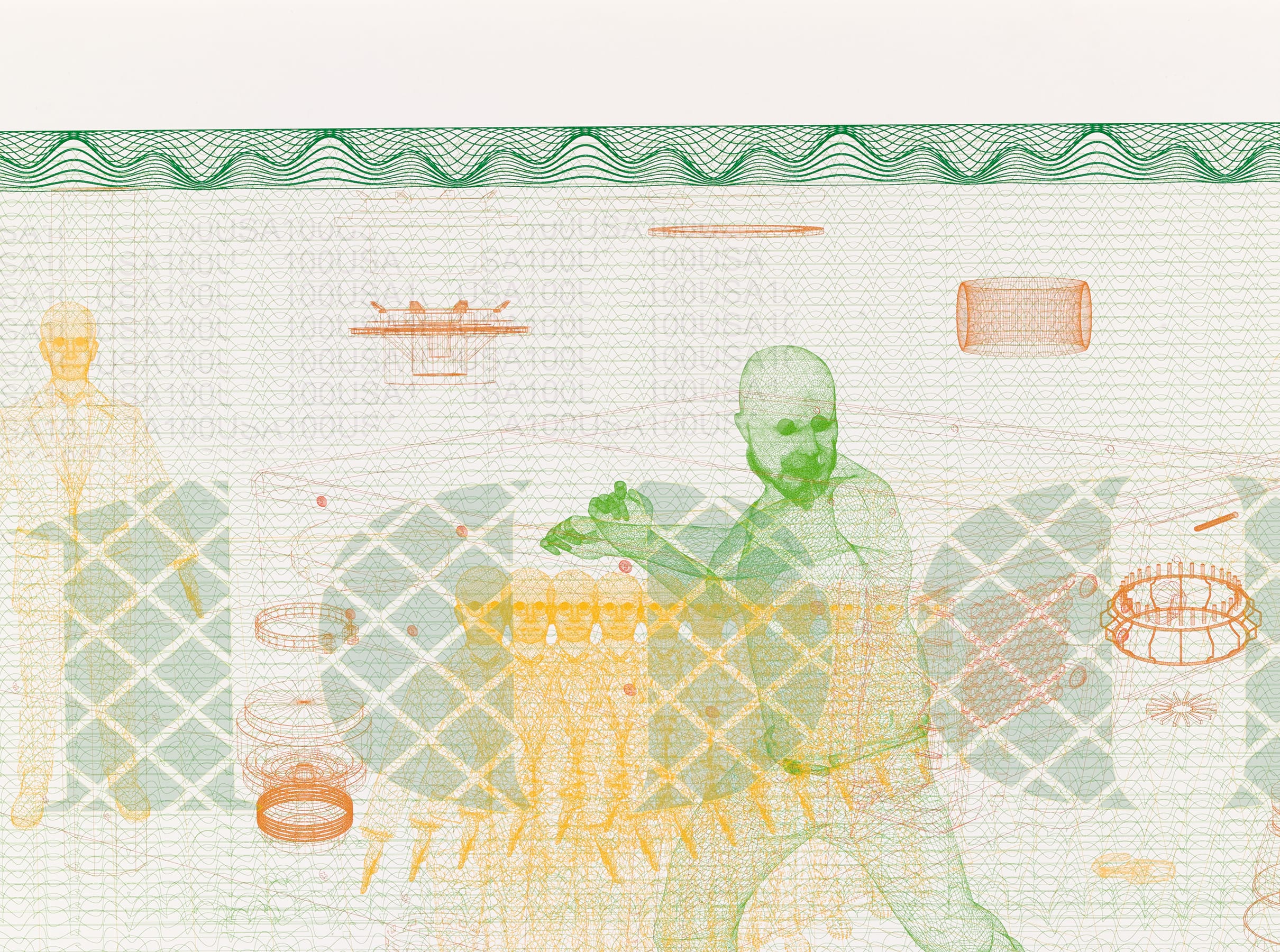
Mariano Salvador Maella depicts selfless work of head of Bank during episode of plague in Milan
To commemorate the feast day on 4 November of St. Charles Borromeo, the patron saint of the bank, we present the painting Saint Charles Borromeo Administering the Viaticum to the Dying during the Plague in Milan by Mariano Salvador Maella (b. Valencia, 1739 - d. Madrid 1819), which is part of our collection. It was commissioned by the Banco Nacional de San Carlos![]() , the earliest forerunner of the Banco de España, to hang in the private chapel at its original head office on Calle de la Luna.
, the earliest forerunner of the Banco de España, to hang in the private chapel at its original head office on Calle de la Luna.
Manuela Mena writes that the saint is shown with his usual iconography. The painting shows him venturing out during an episode of plague in Milan in 1576, disregarding the risk of contagion to console and tend to the sick, bring them food and administer the sacraments. It is typical of Maella's later work, and clearly shows how much of an influence Italian Baroque decorative painter Pietro da Cortona was on him and on other students at the Real Academia de Bellas Artes de San Fernando, including the young Vicente López Portaña.
 Mariano Salvador Maella: St. Charles Borromeo Administering the Viaticum to the Dying during the Plague in Milan (1786)
Mariano Salvador Maella: St. Charles Borromeo Administering the Viaticum to the Dying during the Plague in Milan (1786)
This is one of the paintings in the exhibition 2328 reales de vellón. Goya and the origins of the Banco de España Collection, which highlights the key role played by Goya in the founding and future direction of the collection. The exhibition is scheduled to run until 26 February 2022, and also includes three more works produced at Maella’s studio: Charles III of Spain in Armour (1783), The Prince of Asturias, the Future Charles IV (1783) and María Luisa of Parma, Princess of Asturias (1783). He is without doubt one of the most significant, most influential of the many artists who worked at the royal court in the second half of the 18th century.
 (Studio of ) Mariano Salvador Maella: Charles III of Spain in Armour (1783), The Prince of Asturias, the Future Charles IV (1783) and María Luisa of Parma, Princess of Asturias (1783)
(Studio of ) Mariano Salvador Maella: Charles III of Spain in Armour (1783), The Prince of Asturias, the Future Charles IV (1783) and María Luisa of Parma, Princess of Asturias (1783)
